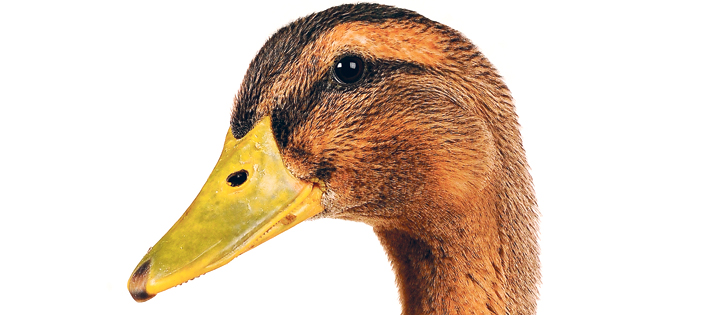Waterhemp was found in a soybean field southeast of Winnipeg last fall, more than 75 kilometres from the U.S. border.
It was the first discovery of waterhemp in Manitoba and likely in Western Canada.
Now that it’s arrived, weed scientists are wondering how this happened. How did waterhemp, a pigweed common to the U.S. Midwest, wind up in a soybean field in Manitoba?
Did it arrive in contaminated soybean seed? Did it move on farm equipment?
“It’s hard to say, but it is interesting,” said Jeanette Gaultier, a Manitoba Agriculture weed specialist.
Read Also

Using artificial intelligence in agriculture starts with the right data
Good data is critical as the agriculture sector increasingly adopts new AI technology to drive efficiency, sustainability and trust across all levels of the value chain.
“The first report coming in from the Landmark area (far from the border), it kind of surprised me.”
Kevin Bradley, a University of Missouri weed scientist, might have an explanation: ducks could have transported waterhemp seed to Manitoba from soybean fields in North Dakota or Minnesota.
In 2015, Bradley and Jaime Farmer, a master’s student in plant science, conducted a unique study into ducks, geese and weed seeds.
They were interested in the dining habits of ducks and geese because palmer amaranth, a type of pigweed, was marching across Missouri.
Bradley noticed that the weed was spreading mostly to counties with river valleys. Flooding probably wasn’t the cause because palmer amaranth was migrating north from Arkansas, while the Missouri and Mississippi Rivers flow south.
Bradley came up with the hypothesis that waterfowl were responsible because they like to be close to water.
Bradley and Farmer devised a two-part study to test the theory.
In part one, they collected ducks and snow geese from Missouri hunters and dissected the waterfowl, looking for weed seeds in the guts.
It turned out that waterfowl, particularly ducks, like weed seeds.
The scientists extracted weed seeds from 238 ducks and planted the seeds to see if they would grow.
The seeds from the ducks produced 14,500 weeds representing 50 species, including palmer amaranth and waterhemp.
They found fewer seeds in the 111 snow geese that they dissected. Seeds from the geese produced only 86 weeds.
Having proved that ducks eat weed seeds and that the weeds remain intact, Bradley and Farmer moved on to part two of their experiment.
They fed ducks weed seeds and then monitored how many of them passed through the ducks and how long it took for the seeds to come out of the ducks.
About 15 to 20 percent of waterhemp seeds made it through the ducks’ gut without being digested, and the scientists found that smaller weed seeds, such as common lambs quarters, waterhemp and palmer amaranth, can stay inside a duck a long time.
Most seeds stay in ducks for four to 16 hours, but small seeds can remain for 36 to 48 hours.
Assuming a typical seed stays in a duck for eight hours, the bird could fly hundreds of kilometres north in that time and deposit the seed in another farm field.
“How far away from the source (can it be transported)?” he said
“I think there’s a whole lot more work to be done.”
Bradley became interested in ducks and weed seeds because weeds with resistance to glypho-sate and other herbicides have been spreading northward in the United States.
Scientists have a number of theories on how weed seeds migrate. Some believe custom combine crews are responsible as they move south to north in the U.S. at harvest time. Others think contaminated feed or seed are the culprits.
However, Bradley’s research suggests waterfowl may play a significant role.
“If you come to a state like Missouri … waterhemp is everywhere,” he said.
“If you have these (weed) species dominating the vegetation, it starts becoming something that wildlife can spread to other geographies.”
It’s unlikely that a duck could carry a weed seed from Missouri to Manitoba because St. Louis, Mo., is 1,600 km from Winnipeg.
However, glyphosate-resistant waterhemp has been in North Dakota for about three years, and a duck could definitely fly from Fargo, N.D., to Steinbach, Man., in a day.
As weeds such as waterhemp and palmer amaranth become more common in Minnesota, South Dakota and North Dakota, it’s likely that western Canadian farmers will soon see more of those weeds, Bradley said.
“From a waterfowl you can get a (herbicide) resistant weed (on your land) and you didn’t do anything wrong,” he said. “It’s something else to be aware of.”
Bradley plans to continue his research on wildlife and the spread of weeds. He hopes to study other birds to see if they consume and transport weed seeds.
















